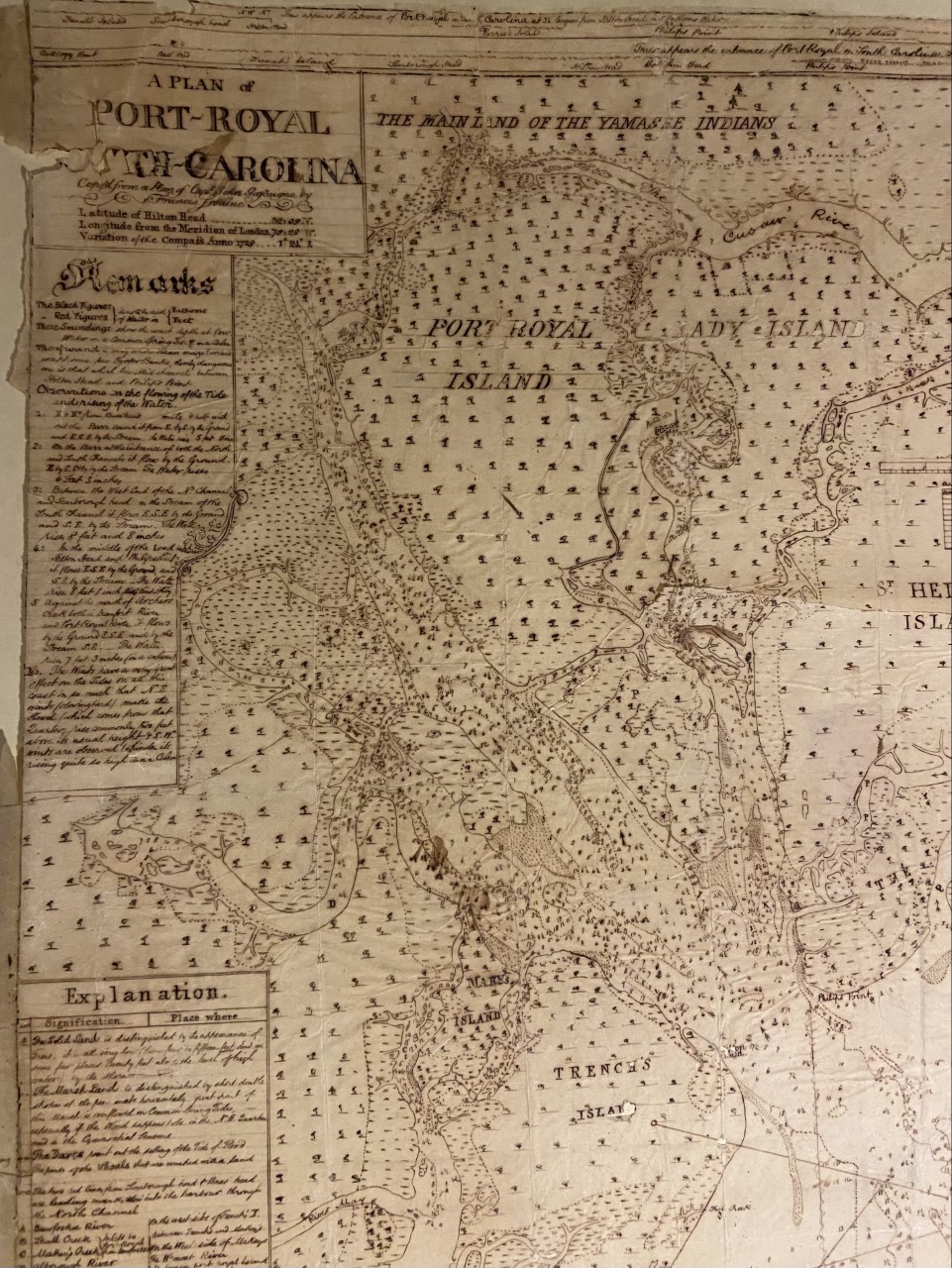
“The Plan of Port Royal” from a 1776 map by John Gascoigne. This map is part of the collections of the South Carolina Historical Society.
After the British took Savannah, Georgia, in December 1778, they decided to establish a base to the north, on Port Royal Island, South Carolina. They hoped this action would enable them to cut the supply line of the American troops commanded by General Benjamin Lincoln, who were stationed at Purrysburg. Port Royal Island was defended by a small garrison of roughly 20 men stationed at Fort Lyttleton who were commanded by Captain John DeTreville.
British General Augustine Prevost sent British Major James Gardiner with about 200 men from Savannah to Hilton Head Island. The British soldiers were transported on the HMS Vigilant, an unseaworthy ship that was used as a floating battery and towed by men in longboats. In the first volume of The History of Beaufort County, the authors point out that passage of such a large ship through the backwaters would have required the knowledge of someone familiar with the area. They suggest that Andrew DeVeaux IV, who defected to the British after the fall of Savannah, assisted the British as they sailed to Hilton Head and on up the Broad River to Port Royal Island. They anchored near the plantation of General Stephen Bull and Gardiner sent Captain Patrick Murray to scout the island while the British ships bombarded the plantations along the river. Murray and his men set fire to several properties, including buildings owned by Thomas Heyward, Jr.
Due to his concern that Fort Lyttleton might fall to the British, Captain DeTreville ordered the fort’s cannons spiked and the bastion blown up on January 31st. He was unaware that on that same day General William Moultrie arrived at the Port Royal Ferry with about 300 men. Moultrie’s artillery units were commanded by Thomas Heyward, Jr. and Edward Rutledge. The following day the troops moved into Beaufort. On February 2 Heyward and Colonel Bernard Beekman were sent to defend the northern side of the town. As they took their positions, Gardiner and his men landed at DeVeaux’s plantation. From there, British scouts moved toward the Beaufort Ferry, where they had a brief skirmish with the Beaufort Militia. They then attacked Stephen Bull’s plantation and burned the buildings. Once his scouts discovered the presence of Moultrie’s troops in Beaufort, Gardiner turned his forces to advance.
On February 3, Moultrie learned of the British action from the previous day. He marched his troops out of town, joining with the detachments of Colonel Beekman and Captain Heyward. The small forces met on top of Gray’s Hill where the British occupied a tree line and the Americans were positioned in an open field. At about 4 o’clock in the afternoon, the British advanced with fixed bayonets. Moultrie’s artillery fired and forced the British to retreat but they regrouped and exchanged fire for about 45 minutes. Both sides were low on ammunition and Gardiner ordered a retreat. As the British fell back, Captain John Barnwell’s calvary captured 26 men, but the British defended themselves and took all but eight back. Both sides lost seven men in the conflict, and, with the destruction of Fort Lyttleton by the Patriots, the battle did not advance the American effort significantly. However, it did boost morale as reports of the victory spread throughout the colonies and it also deterred the British as they sought a route to capture Charleston.